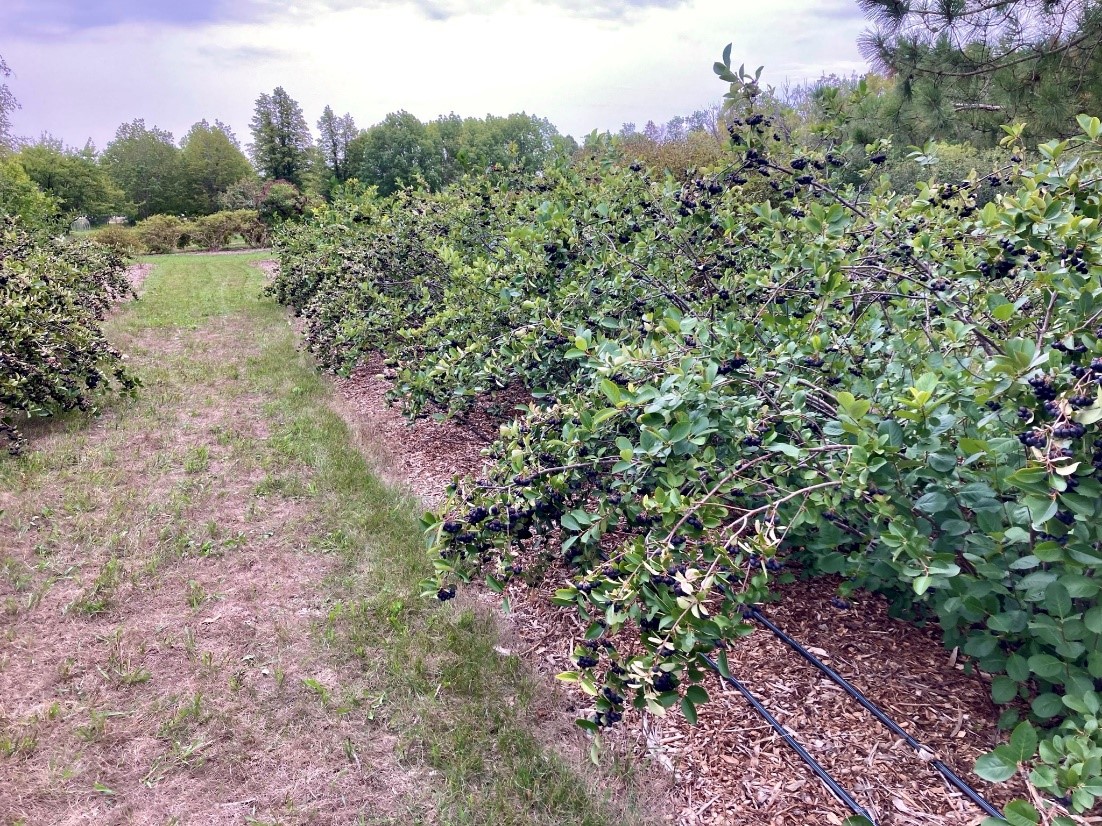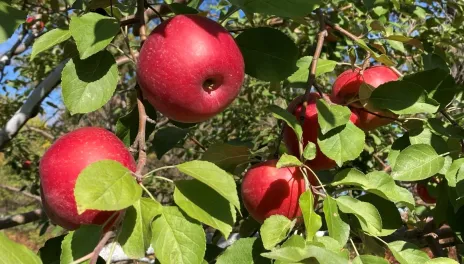Tidying Up the Orchard for Winter
The orchard has received rain!! I can’t tell you how much of a relief this is after a loooong summer of moving the water tank early in the morning and late at night to various locations in the orchard. All the hard work paid off in late summer, though: it supported a tremendous crop of Aronia berries, with over 25 pounds of fruit per plant for the ‘Viking’ variety, and a nice, though smaller than normal, crop of apples. Late August rains were just in time, too, and probably deserve a lot of credit for the final quality.

Right now, mowing is in progress. The late rains have finally greened up much of the grass – and now it’s time to get rid of it. I mow the grass short late in the year and try to remove the clippings to encourage the voles to move elsewhere. It prevents snow mold, too. All the old apples and pears have been picked up and thrown in the trash; don’t compost the fruit if there are insects or diseases in them. It’s also time to apply mulch to keep the roots warm and moist this winter, and cold and moist in early spring. Get your tree guards on before snowfall.
The leaves are still falling in our area. Consider not removing all of them and just shooshing them off to less-kept areas if you can. A lot of insects depend on fallen leaves for overwintering. They are spring food for some and winter insulation for others. Insects are in trouble around the world and we can all do a little bit to help. Read more here: https://xerces.org/blog/leave-leaves-to-benefit-wildlife
Fingers crossed for some insulating snow!
Kathy Wiederholt
Kathy.Wiederholt@ndsu.edu
Fruit Project Manager

